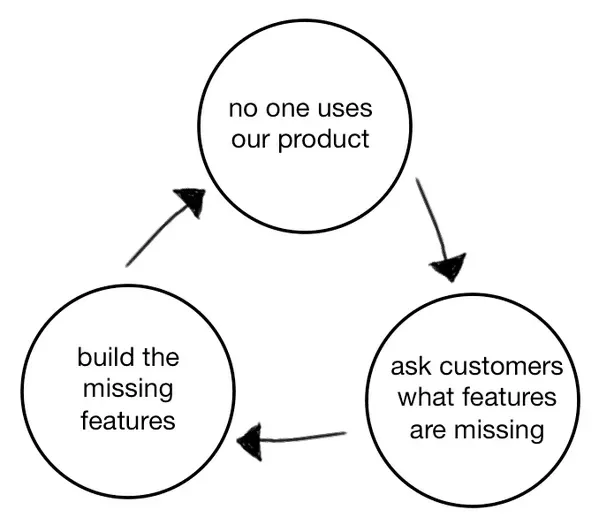At Kinfolk, one of our primary interests is seeing African startups succeed. A startup's success largely depends on its products' success, and product managers oversee the development and launch of these products. If the product fails, it can significantly negatively impact the startup's growth, revenue potential, and ultimately, our investment.
For a startup product to succeed, product managers must understand and navigate the challenges of developing successful products and avoiding the product death cycle. This article provides guidance and resources to help product managers responsible for a startup product succeed. To understand how to prevent a product death cycle, you must first understand everything about a product death cycle.
What does the “Product Death Cycle” mean?
The "product death cycle," according to Jeavio, refers to a standard failure mode that product teams often encounter when they overly focus on customer feedback to the detriment of their overall product vision. This feedback-driven behaviour can result in a vicious circle of constantly seeking feedback from existing customers, building features based on that feedback, and repeatedly failing to gain traction with new customers who may have different needs or preferences than existing ones.
The problem with this approach is that it can lead to a lack of innovation and differentiation and a failure to attract new customers. While listening to your customers and addressing their needs is essential, having a clear product vision that aligns with your company's overall strategy and goals is equally crucial. This requires a balance between customer feedback and a strong product vision that considers the broader market landscape and the needs of potential new customers.
David Bland further explained the product death cycle using a diagram.

The first step in the cycle is the natural state of any product that the user is not utilizing—no one uses the product. However, how the team handles this problem can determine whether they fall into the product death cycle.
The next step is to check with customers for features that need to be added. While seeking customer feedback is vital, relying too much on it can lead to becoming customer-led rather than product-led. This can result in building features based solely on customer requests, leading to a need for more differentiation and a failure to attract new customers.
The third step is building the missing features, but creating new features will not necessarily solve the core issues or significantly impact attracting new customers.
Escaping the product death cycle requires understanding how the product cycle works, identifying the core issues, and developing a product vision that goes beyond customer requests. When done, the product team can create a unique value proposition to attract and retain customers.
Kinfolk desires to help product managers escape this cycle because our interest is to see startups create desirable and profitable products that meet the needs of their customers, generate revenue for the company, and generate a high return on investment, which is why we emphasize the importance of focusing on product vision and strategy, understanding customer needs and desires in-depth, testing ideas with MVPs and prototypes, and pushing back on solutions that are handed down without question.
How can Product Managers Escape The Product Death Trap?
The product vision and strategy: The product vision and strategy should be aligned with the company's vision and business strategy. Product managers should ask themselves about the unique value proposition, customer outcomes, and how to achieve them.
Don't let your customers design solutions: Understanding customers' problems, needs, and desires is essential to keeping them from designing solutions. Then there should be regular interviews, opportunity mapping, and brainstorming with designers and engineers to build a shared understanding, find the best solutions for their customers, and stay open to different perspectives.
Test your ideas with MVPs and prototypes: Product managers should run small experiments with minimum viable products (MVPs) and prototypes to validate ideas and test critical assumptions before investing heavily in development. This approach allows them to identify and mitigate risks early on.
Push back on things handed down: Challenge assumptions and push back on things handed down to them. Product managers should be willing to have difficult conversations with stakeholders and ask questions about decisions that have been made.
Continuously iterate and improve: Embrace a culture of continuous improvement on the product as needed. As a product manager, you should be willing to pivot if the product doesn't meet the desired outcomes and constantly seek customer feedback.
We encourage product managers to adopt these strategies to avoid the product death cycle and maximize their startups' chances of success. Doing this increases a startup's chances of seeing a high return on investment in the long run.
As an African startup founder, send us a message if you would like to collaborate with us.

